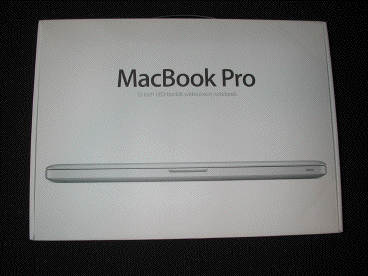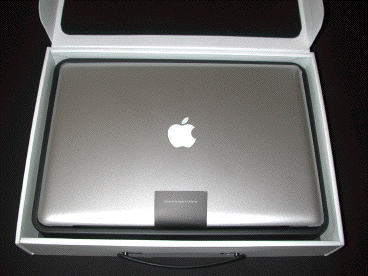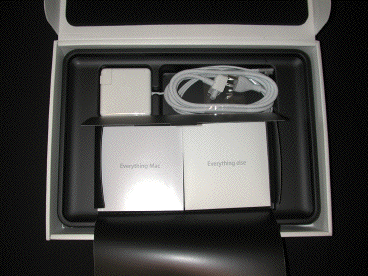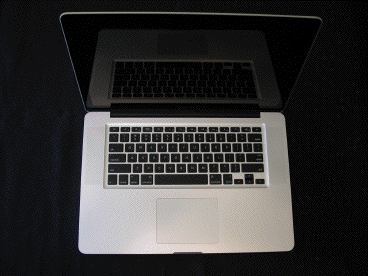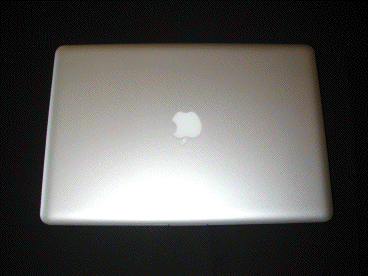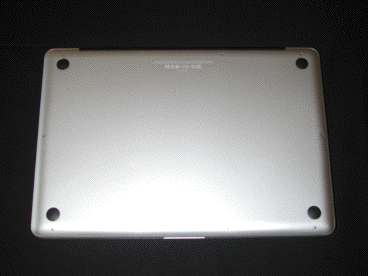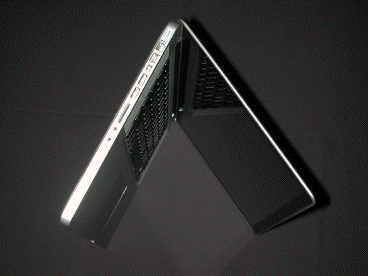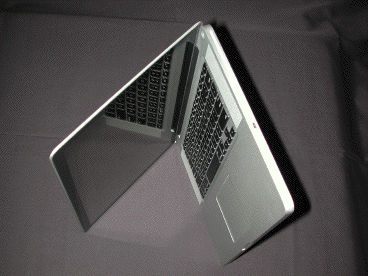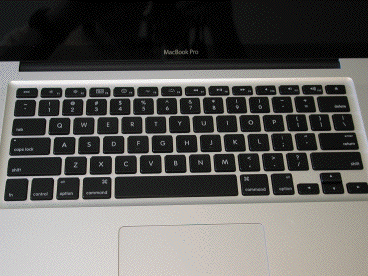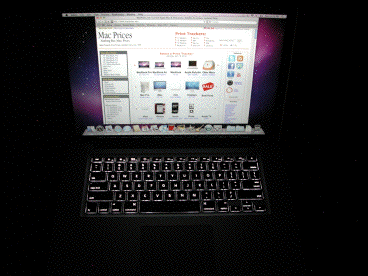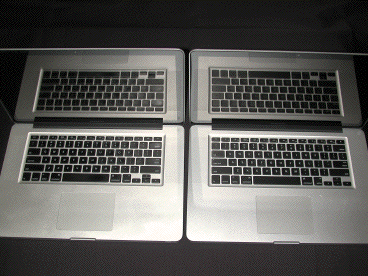Review: 15" 2.66GHz i7 MacBook Pro
April 2010 MacBook Pros
by Steve Hildreth & Charles W. Moore
After 10 months and in the wake of all the iPad hype and hoopla, Apple introduced new MacBook Pros in April 2010. The third-generation refreshment proved to be just about what everyone expected, save for the fact that the 13 inch model retains a Core 2 Duo processor rather than one of Intel's latest 32 nanometer technology Core i3 or i5 CPUs. More discussion about that below.
Apple wisely chose not to mess with the delightful and extremely solid aluminum unibody design, minimal change of which suits us fine, since the aluminum unibody is our favorite Apple portable since the PowerBook G3 Pismo of 10 years ago.
It also appears that speculation as to why Apple was so slow out of the blocks in getting Core-i machines into the channels being due to the ongoing third-party dispute between Intel and NVIDIA over licensing the latter to create integrated graphics processing silicon for the new Intel CPU family. Some sort of accommodation has now obviously been agreed to, since the 15 inch and 17 inch MBPs are equipped with an Intel inregrated graphics chipset plus the new NVIDIA GeForce 330M 48 core graphics processor unit (as opposed to the 32 core GeForce 9600M GT GPU used in 17" and high-end 15" 2nd gen. MBPs) that Apple claims can provide performance up to twice as fast as the integrated GeForce 320M graphics in the new 13-inch MacBook Pros, but the two larger models Core-i models use more pedestrian Intel HD integrated graphics rather than the GeForce 320M. The Intel IGU sips power, but is actually less powerful performance-wise than the Nvidia GeForce 9400m integrated graphics used in previous MacBook Pro generation, so there's real necessity for the discrete graphics processor in graphically-intense situations that the 9400M or new 320M could handle nicely.
Price points have pretty much held close to where they were with the previous generation. The entry-level 15-inch MacBook Pro has been bumped by $100 to $1,799, but value is obviously there in that the base 15-incher now has two graphics processors featuring automatic graphics switching technology that toggles back and forth seamlessly between the Intel integrated graphics and the much more powerful Nvidia discrete GPU based on intensity of demand, just like its more expensive siblings, whereas the corresponding $1,699 second-generation model had an almost identical internal specification to the higher-end 2.53 GHz 13 inch MacBook Pro with only an NVIDIA GeForce integrated graphics chipset available.
Since the base 15 inch MacBook Pro now also comes with a 2.4 GHz Intel Core i5 as opposed to the third-generation $1,499 13 inch model's 2.66 GHz Intel Core 2 Duo CPU, there's obviously a much wider specification and performance gap between these two models than there had been previously, making it hard to straight-facedly complain about the or 6 percent price bump.
Prices have actually been lowsered slightly on the high-end 15 inch unit from $2,299 to $2,199 (4 percent), and on the 17-in. MacBook Pro from $2,499 to $2,299 - a substantial 8 percent drop.

The MacBook Pro glass Multi-Touch trackpad now supports inertial scrolling (a most welcome addition), and a 512GB Solid State Drive is also optionally available (in addition to 128GB and 256GB SSDs) on all models, albeit at a suck-in-your-breath $1300 tariff, as compared with a relatively modest $200 for the optional 500GB 7200rpm conventional hard drive. A flick of the finger on the trackpad now scrolls down web pages just like on an iPhone, and this is quite natural and evolutionary.
While the maximum nominal clock speed has actually taken a rollback on the 15 inch and 17 inch models (see more on this below), real-world performance with these units is claimed to be up to 50% better than it was with the outgoing Core 2 Duo models, since the Core i5 and i7 processors integrate their memory controller and Level 3 cache for faster access to system memory.
Expansion bay configurations are something that hasn’t changed, with the 13” and 15” models offered only with a SD Card slot, and the ExpressCard/34 slot reserved for the 17 inch model. There is still no availability of built-in Blue Ray optical drive support. Evidently, Steve Jobs is still not a Blue Ray fan. We don't really miss Blu-Ray much, but a more serious omission in our estimation is that there's still no USB 3 support -- something we had been expecting with this MacBook Pro refresh. No eSATA either (third-party workaround here: http://www.sonnettech.com/product/temposataedgeexpress34.html ) Very peculiar. At least we still have FireWire on all MacBook Pro models
Incidentally, that new NVIDIA 320M integrated graphics (confusingly, NVIDIA also makes a GeForce GT 320M graphics processor) chipset that comes with the abidingly Core 2 Duo 13 inch MacBook Pro, replacing the first and second generation models’ GeForce 9400M chipset and touted as the “fastest integrated graphics processor on the market”, is reportedly a custom design at least currently unique to Apple that offers up to 80 percent faster graphics performance than the already more than respectably fast 9400M did while using as little as 40 percent as much power as the 16 core 9400M. The 48 core 320M annexes up to 256MB of the main system memory rather than having its own, dedicated VRAM.
The new processors are actually dual-core CPUs with “Hyper-Threading” that lets two threads run simultaneously on each core, recognized by OS X four “virtual” cores) Core i5 and i7 CPUs of the larger, more expensive models, which have, as noted above, actually been scaled back from the maximum 2.8GHz that was available in the preceding high-end Core 2 Duo models, to 2.66 GHz with the Core “i”s. It’s probably enough of a marketing hiccup that there are now 2.66 GHz Core 2 Duo processors offered with the 13” machine and also 2.66 GHz Core “i” CPUs with the 15” and 17” models, although in fact the latter are much faster than the former, and the Core “i” chips’ “Turbo Boost” feature can provide shortish bursts from the nominal 2.66 GHz to 3.06 GHz for intensive dual core tasks, and up to 3.33 GHz for single core tasks -- sort of analogous to using nitrous oxide systems injection in automobiles to provide a short-duration horsepower boost.
Appearance-wise, there are no significant changes across the board. The unibody design would be hard to improve on, but there are a gaggle of smaller tweaks, such as the glass multitouch trackpads now supporting inertial scrolling (analogous to the freewheeling scroll wheels on some computer mice like my Logitech V-550). Internally, the WiFi/Bluetooth board has been moved inside the laptop’s housing, with Apple mounting a WiFi antenna on the optical drive opening frame. As can be seen in the last picture at the bottom of this page, the new models are nearly identical to the October '08 models, with the excpetion of an SD slot, fully-enclosed bottom casing, and slightly brighter shading of white on the 'MacBook Pro' lettering.
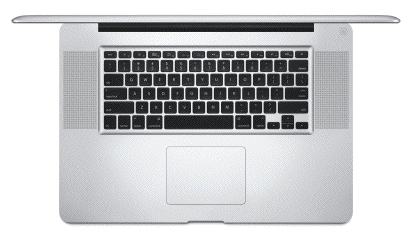
Graphics Mode Switching On The Fly
A new enhancement on the dual graphics mode models is that they now automatically switch on the fly between the power-economizing integrated HM55 Express chipset and the discrete 330M GPU with its 48 Core architecture and 256 MB or 512 MB of dedicated VRAM, based on graphics processing demand. It can optionally be locked in discrete processing mode, but unfortunately not for integrated graphics only, although that’s sort of a nitpicky gripe.
The Core i5 and i7 CPUs in these new models have the same or lower nominal clock speeds as the Core 2 Duo silicon they replace, but the slowest Core i5 faster than the fastest Core 2 Duo processor despite running at a lower clock speeds (2.40GHz vs 3.06GHz) due to enhanced internal efficiency. The Core “i” chips’ “Turbo Boost” feature can also provide shortish bursts from the nominal 2.66 GHz to 3.06 GHz for intensive dual core tasks, and up to 3.33 GHz for single core tasks.
It should be noted that unlike the quad-core Intel i5 and i7 desktop processors found in Apple’s iMac, the mobile i5s and i7s in the new 15 and 17-inch MacBook Pros are not quad-core but rather two-core processors, but include Intel’s “Hyper-Threading” technology that allows them to run four virtual threads. So while the new Core “i” 15” and 17” MacBook Pros provide a substantial performance boost over their Core 2 Duo predecessors -- especially that new $1,799 entry-level unit which has to be (along with the base $1,199 13” model) the value leader among these new ‘Books - don’t expect the them to match or even com close to the power of the true quad-core desktop i5 and i7 models, even though Intel’s “Hyper-Threading” technology allows the mobile versions to run four virtual threads on their two cores.
The advantage of the lower-powered mobile chips is that the quad-core desktop i5 generates 95 watts of heat and the desktop i7 generates 130 watts, while the mobile i5 and i7 both generate about 35 watts, which is in my estimation the outer limit of what’s practical in a laptop unless you want to live in a cacophony of screaming cooling fans and singeing your hands on the palm rests.
Category-Leading Battery Life
Another gilding-the-lily enhancement with these new MacBook Pros is battery life -- now a whopping claimed 10 hours for the 13-inch model, the same as for the much less capable iPad. Nominal runtime for the 15” and 17” units is eight to nine hours depending on how often the discrete GPU is dipped into. The 15-incher’s battery capacity has been bumped from 73 Wh to 77.5 Wh which presumably accounts for that model’s 0.1 lb. weight gain.
Performance
Macworld has benchmarked one of the new $1799 entry-level 15-inch models with a 2.4GHz Core i5 processor, and test results show a dramatic improvement over the $1699 Core 2 Duo MacBook Pro it replaces 23 percent faster overall system performance, and not only bests the model it replaces, but is also faster than the previous model “better” and “best” configurations which used 2.66GHz and 2.8GHz Core 2 Duo processors, respectively.
BareFeats' rob-ART morgan has posted has also some quick test results comparing the fastest 2009 Core 2 Duo MacBook Pro to the 2010 MacBook Pro Core i5 and Core i7 with the iMac Core i7 as a control, noting significant performance improvements over the fastest 2009 Core 2 Duo MacBook Pro.
Our testing of the 15" 2.66GHz i7 MacBook Pro revealed Geekbench scores nearly matching those of the 2009 2.66GHz Mac Pro and about 30% higher than the previous high-end 15" 2.8GHz MacBook Pro Core 2 Duo. The machine itself feels snappy in normal daily tasks like opening folds and web browsing. Indeed, Safari 4 launches about a second faster than on a Oct '08 15" 2.4GHz MacBook Pro Core 2 Duo. While depending on the speed of your network connection, Hulu videos are smooth on a fast connection, and Second Life can be an enjoyable experience with graphics rezzing quickly.
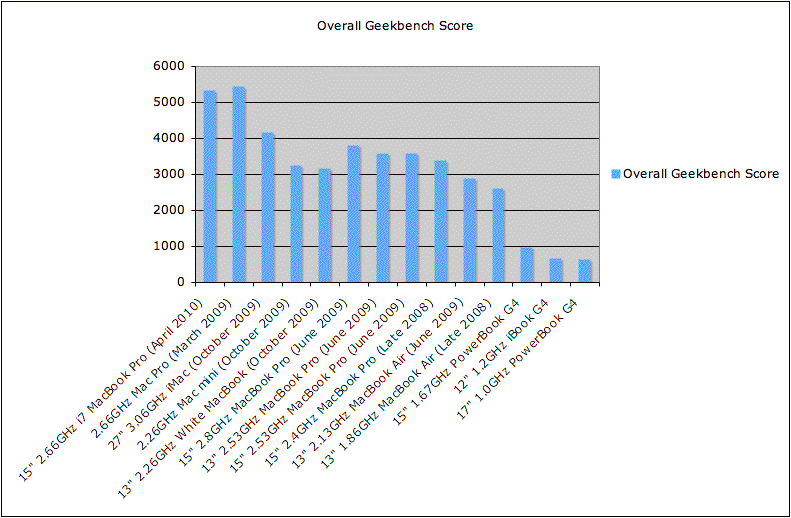
We're still not smitten with the built-in, non-swappable batteries introduced with the MacBook Air, the 1st-gen 17” unibody MacBook Pro, and the entire 2ng-gen. MBP lineup, but Apple argues that the built-in battery design results in less waste and depleted batteries (they’re rated for approximately 1,000 charge cycles) can be replaced for $129 or $179 depending on model, which includes installation and disposal of the spent battery in an environmentally responsible manner.
However, other than the long wait, in general we're pleased with the way Apple has executed this upgrade, notwithstanding that the continued unavailability of Core “i” power in the 13” MacBook Pro is a bit of a disappointment as is the absence of USB 3. Steve Jobs is quoted as stating that "We chose killer graphics (for the 13" MacBook Pro) plus 10 hour battery life over a very small CPU speed increase. Users will see far more performance boost from the speedy graphics." Because of the aforementioned licensing dispute between NVIDIA and Intel, Apple would have had to include a discrete graphics chip with a 13" MacBook Pro i3, and there is simply no room on that model's logic board for a graphics chip, as well as the added cost for such a configuration.
Time will tell, but these 3rd-generation unibodies could well be the best Apple notebook computers yet, and we rate this a very successful refreshment.
Appendix -
Detailed Specification For The 3rd-Generation Unibody MacBook Pros
The 2.4 GHz, 13-inch MacBook Pro, for a suggested retail price of $1,199.00, includes:
* 13.3-inch widescreen LED-backlit 1280 x 800 glossy display;
* 2.4 GHz Intel Core 2 Duo with 3MB shared L2 cache;
* 1066 MHz front-side bus;
* 4GB 1066 MHz DDR3 SDRAM, expandable to 8GB;
* NVIDIA GeForce 320M integrated graphics;
* 250GB serial ATA hard drive running at 5400 rpm, with Sudden Motion Sensor;
* a slot-load 8X SuperDrive with double-layer support (DVD±R DL/DVD±RW/CD-RW) optical drive;
* Mini DisplayPort (VGA, DVI and HDMI adapters sold separately);
* AirPort Extreme 802.11n wireless networking and Bluetooth 2.1+EDR;
* Gigabit Ethernet port;
* iSight video camera;
* two USB 2.0 ports;
* one FireWire 800 port (FireWire 400 compatible);
* SD card slot;
* combined headphone/line in (analog/digital);
* glass Multi-Touch trackpad and illuminated keyboard;
* built-in, 63.5WHr lithium polymer battery; and
* 60 Watt MagSafe Power Adapter.
___
The 2.66 GHz, 13-inch MacBook Pro, for a suggested retail price of $1,499.00, includes:
* 13.3-inch widescreen LED-backlit 1280 x 800 glossy display;
* 2.66 GHz Intel Core 2 Duo with 3MB shared L2 cache;
* 1066 MHz front-side bus;
* 4GB 1066 MHz DDR3 SDRAM, expandable to 8GB;
* NVIDIA GeForce 320M integrated graphics;
* 320GB serial ATA hard drive running at 5400 rpm, with Sudden Motion Sensor;
* a slot-load 8X SuperDrive with double-layer support (DVD±R DL/DVD±RW/CD-RW) optical drive;
* Mini DisplayPort (VGA, DVI and HDMI adapters sold separately);
* AirPort Extreme 802.11n wireless networking and Bluetooth 2.1+EDR;
* Gigabit Ethernet port;
* iSight video camera;
* two USB 2.0 ports;
* one FireWire 800 port (FireWire 400 compatible);
* SD card slot;
* combined headphone/line in (analog/digital);
* glass Multi-Touch trackpad and illuminated keyboard;
* built-in, 63.5WHr lithium polymer battery; and
* 60 Watt MagSafe Power Adapter.
Build-to-order options for the 13-inch MacBook Pro include the ability to upgrade to 8GB 1066 MHz DDR3 SDRAM, a 320GB 5400 rpm or a 500GB 5400 rpm hard drive, a 128GB, 256GB or 512GB solid state drive, Mini DisplayPort to DVI Adapter, Mini DisplayPort to Dual-Link DVI Adapter (for 30-inch DVI display), Mini DisplayPort to VGA Adapter, Apple Remote, Apple MagSafe Airline Adapter and the AppleCare Protection Plan.
___
The 2.4 GHz, 15-inch MacBook Pro, for a suggested retail price of $1,799.00, includes:
* 15.4-inch widescreen LED-backlit 1440 x 900 glossy display;
* 2.4 GHz Intel Core i5 with 3MB shared L3 cache;
* 4GB 1066 MHz DDR3 SDRAM, expandable to 8GB;
* integrated Intel HD Graphics + NVIDIA GeForce GT 330M discrete graphics with 256MB of VRAM;
* 320GB serial ATA hard drive running at 5400 rpm, with Sudden Motion Sensor;
* a slot-load 8X SuperDrive with double-layer support (DVD±R DL/DVD±RW/CD-RW) optical drive;
* Mini DisplayPort (VGA, DVI and HDMI adapters sold separately);
* AirPort Extreme 802.11n wireless networking and Bluetooth 2.1+EDR;
* Gigabit Ethernet port;
* iSight video camera;
* two USB 2.0 ports;
* one FireWire 800 port;
* SD card slot;
* audio line in (analog/digital);
* audio line out/headphone (analog/digital);
* glass Multi-Touch trackpad and illuminated keyboard;
* built-in, 77.5WHr lithium polymer battery; and
* 85 Watt MagSafe Power Adapter.
___
The 2.53 GHz, 15-inch MacBook Pro, for a suggested retail price of $1,999.00, includes:
* 15.4-inch widescreen LED-backlit 1440 x 900 glossy display;
* 2.53 GHz Intel Core i5 with 3MB shared L3 cache;
* 4GB 1066 MHz DDR3 SDRAM, expandable to 8GB;
* integrated Intel HD Graphics + NVIDIA GeForce GT 330M discrete graphics with 256MB of VRAM;
* 500GB serial ATA hard drive running at 5400 rpm, with Sudden Motion Sensor;
* a slot-load 8X SuperDrive with double-layer support (DVD±R DL/DVD±RW/CD-RW) optical drive;
* Mini DisplayPort (VGA, DVI and HDMI adapters sold separately);
* AirPort Extreme 802.11n wireless networking and Bluetooth 2.1+EDR;
* Gigabit Ethernet port;
* iSight video camera;
* two USB 2.0 ports;
* one FireWire 800 port;
* SD card slot;
* audio line in (analog/digital);
* audio line out/headphone (analog/digital);
* glass Multi-Touch trackpad and illuminated keyboard;
* built-in, 77.5WHr lithium polymer battery; and
* 85 Watt MagSafe Power Adapter.
___
The 2.66 GHz, 15-inch MacBook Pro, for a suggested retail price of $2,199.00, includes:
* 15.4-inch widescreen LED-backlit 1440 x 900 glossy display;
* 2.66 GHz Intel Core i7 with 4MB shared L3 cache;
* 4GB 1066 MHz DDR3 SDRAM, expandable to 8GB;
* integrated Intel HD Graphics + NVIDIA GeForce GT 330M discrete graphics with 512MB of VRAM;
* 500GB serial ATA hard drive running at 5400 rpm, with Sudden Motion Sensor;
* a slot-load 8X SuperDrive with double-layer support (DVD±R DL/DVD±RW/CD-RW) optical drive;
* Mini DisplayPort (VGA, DVI and HDMI adapters sold separately);
* AirPort Extreme 802.11n wireless networking and Bluetooth 2.1+EDR;
* Gigabit Ethernet port;
* iSight video camera;
* two USB 2.0 ports;
* one FireWire 800 port;
* SD card slot;
* audio line in (analog/digital);
* audio line out/headphone (analog/digital);
* glass Multi-Touch trackpad and illuminated keyboard;
* built-in, 77.5WHr lithium polymer battery; and
* 85 Watt MagSafe Power Adapter.
Build-to-order options for the 15-inch MacBook Pro include the ability to upgrade to 8GB 1066 MHz DDR3 SDRAM, a high resolution 15-inch 1680 x 1050 display in glossy and antiglare, a 500GB 5400 rpm or 500GB 7200 rpm hard drive, a 128GB, 256GB or 512GB solid state drive, Mini DisplayPort to DVI Adapter, Mini DisplayPort to Dual-Link DVI Adapter (for 30-inch DVI display), Mini DisplayPort to VGA Adapter, Apple Remote, Apple MagSafe Airline Adapter and the AppleCare Protection Plan.
___
The 2.53 GHz, 17-inch MacBook Pro, for a suggested retail price of $2,299 (US), includes:
* 17-inch widescreen LED-backlit 1920 x 1200, glossy display;
* 2.53 GHz Intel Core i5 with 3MB shared L3 cache;
* 4GB 1066 MHz DDR3 SDRAM, expandable to 8GB;
* integrated Intel HD Graphics + NVIDIA GeForce GT 330M discrete graphics with 512MB of VRAM;
* 500GB serial ATA hard drive running at 5400 rpm, with Sudden Motion Sensor;
* a slot-load 8X SuperDrive with double-layer support (DVD±R DL/DVD±RW/CD-RW) optical drive;
* Mini DisplayPort (VGA, DVI and HDMI adapters sold separately);
* AirPort Extreme 802.11n wireless networking and Bluetooth 2.1+EDR;
* Gigabit Ethernet port;
* iSight video camera;
* three USB 2.0 ports;
* one FireWire 800 port (FireWire 400 compatible);
* ExpressCard/34 expansion card slot;
* audio line in (analog/digital);
* audio line out/headphone (analog/digital);
* glass Multi-Touch trackpad and illuminated keyboard;
* built-in, 95WHr lithium polymer battery; and
* 85 Watt MagSafe Power Adapter.
Build-to-order options for the 17-inch MacBook Pro include a 2.66 GHz Intel Core i7 processor, 8GB 1066 MHz DDR3 memory, a 500GB 7200 rpm hard drive, a 128GB, 256GB or 512GB solid state drive, antiglare display, Mini DisplayPort to DVI Adapter, Mini DisplayPort to Dual-Link DVI Adapter (for 30-inch DVI display), Mini DisplayPort to VGA Adapter, Apple Remote, Apple MagSafe Airline Adapter and the AppleCare Protection Plan.
